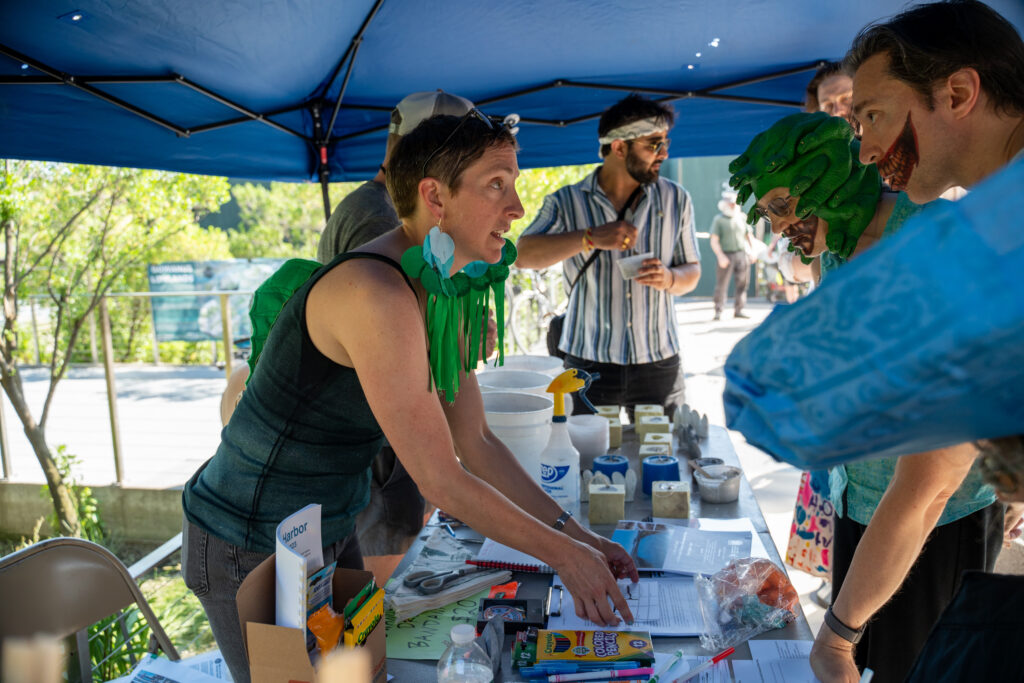
If you’ve been subscribed to our email list or keeping an eye on our Instagram account you’ve probably seen us post and share about the Superfund-related environmental restoration efforts on the canal — usually referred to as the NRDA.
Perhaps you’ve attended one of our learning sessions, or maybe you’ve just been curious about it. Well, we’re here to help! The Dredgers want to make sure you know what’s happening and how you can get involved. Celeste LeCompte and Lilian Ruiz have put together a great overview of the whole process, including some guidance on how to make your public comments.
What's the NRDA? Why Should I Care?
The Natural Resource Damages Assessment (NRDA) is the first part of a long-term environmental restoration effort that involves multiple government agencies, the entities held responsible for the pollution and its cleanup, and people like us — the community!
The first step is a beefy, 50+ page document — the “Draft Plan” — for how environmental harm to the Gowanus Canal will be determined.
This Plan will shape restoration efforts, both through identifying what local wildlife, habitat, and human activities have been harmed and by calculating the financial value of those harms. That dollar amount will be used to set the budget for restoration projects that could have a direct impact on (and benefit to!) our community. The process is overseen by a group of government agencies, known collectively as “the trustees.”
You can submit comments on the Draft Plan through June 14.
The Dredgers have been reviewing the plan, and we’ve identified some issues that we hope to see addressed. We’ll post a longer update later, but for now, we are focused on three primary issues related to our mission and past work:
- The current plan only intends to assess the impact of pollution on water in the canal, sediment on the bottom, and wildlife living in the canal. This leaves out a lot of parts of the canal that we care about, including the intertidal zone, and impacts to our local groundwater and air quality.
- Human and recreational uses of the canal are extremely important and deserve a more robust analysis. The long-term pollution of the Gowanus Canal and the more recent changes in water access and bulkheads due to the remediation process have both limited recreational and fishing use of the canal.
- Our research on the Atlantic Ribbed Mussel populations in the canal, our Birding by Canoe tours, our Science Saturday Drone Explorations, and our regular voyages on the canal have all shown us that there are a much wider range of creatures that have been impacted by the pollution than the plan currently accounts for.
We’ll be making comments focused on these issues and will specifically highlight evidence from our past experience on the canal. You can help, too, by sharing your perspective on these issues with the Trustees. Below, we have our guide on how to write an effective comment. A few questions to consider as you think about what to say:
- What wildlife and species have you seen in your explorations of the canal?
- How and why have you enjoyed boating or fishing on the canal? What has prevented you from boating here more?
- What would a greener, more accessible canal mean for you?
Postcards to help you write your comments can be found at upcoming local events, including all Dredgers events. (You can view the postcards here and print your own, if you like!)
Celeste and Lillian are also available to attend your event or talk to your organization, if you’d like to help us spread the word. Reach out to celeste@revolutionarygrammar.com
A Guide for Writing Comments
This guide is meant to help individuals prepare comments to the Gowanus Canal Natural Resource Damages Assessment draft plan. Comments are due to the Trustees on June 14.
Component to include | Examples |
Introduction |
|
Your Experience |
|
Problem |
|
Solution Simply and concisely describe what action or solution could address the problem you see and why it works. Reference other relevant projects or examples that support your idea. |
|
Make the Ask What action do you want taken on your behalf? What do you want to see changed or considered? End with a thank you for reading your comment. |
|
New York State Department of Environmental Conservation
Natural Resource Damages (NRD) Section
c/o Alicia Pasos
625 Broadway, 14th Floor
Albany, NY 12233
Comments must be emailed or postmarked by June 14, 2024.